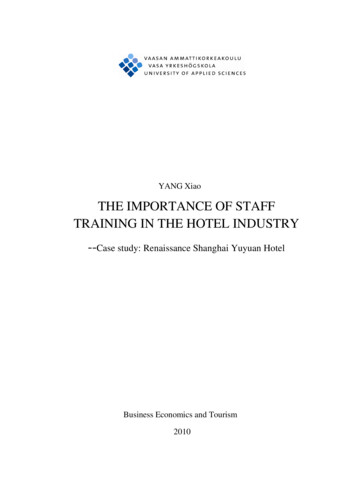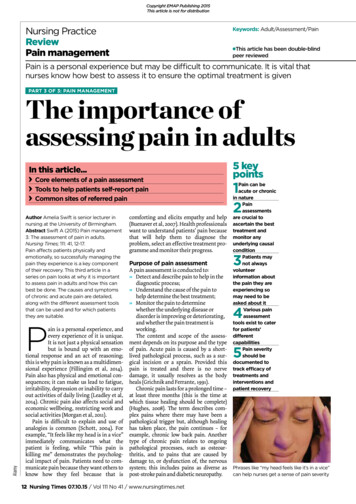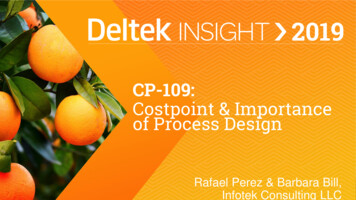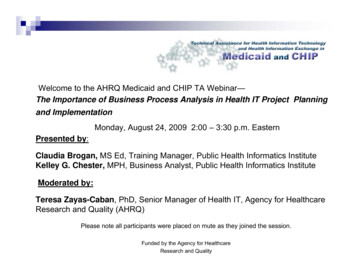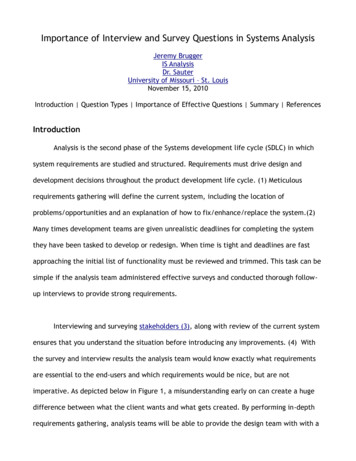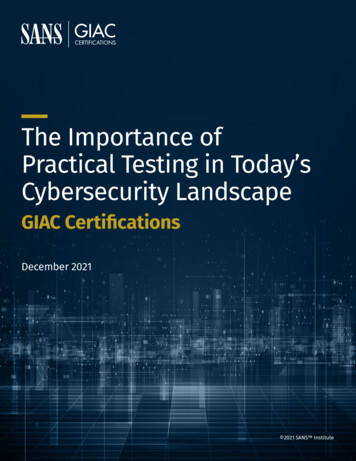
Transcription
The Importance ofPractical Testing in Today’sCybersecurity LandscapeGIAC CertificationsDecember 2021The Importance of Practical Testing in Today’s Cybersecurity Landscape 2021 SANS Institute1
Executive SummaryReal-world scenarios are the future of cybersecurity certification programs, provinga cybersecurity practitioner’s ability to defend enterprises against increasinglysophisticated cyberattacks and exploits that target specific vulnerabilities.Practical testing needs to be a critical component of cybersecurity certificationsgiven that major data breaches continue to impact companies of all sizes andsectors. Malicious nation-state adversaries continue to probe and attack the networksof government organizations and private sector enterprises responsible for criticalinfrastructures, such as financial services, oil and gas production, and utilities.The COVID-19 pandemic also continues to present businesses across the globe withcybersecurity challenges, including opportunistic phishing campaigns, discontinuity ofinformation security operations, and long-term financial constraints, according to theAccenture Security 2021 Cyber Threatscape Report.GIAC, known for providing the highest standard in cybersecurity certifications,recognized that companies, government agencies, and educational institutions needcybersecurity professionals with the technical, hands-on skills to defend our nation’snetworks and critical infrastructure from all forms of threats. To meet this need, GIACraised the bar for cybersecurity certifications even higher with CyberLive – hands-on,real-world practical testing.The demand for practical testing is growing among both cybersecurity professionalsand hiring managers. Practitioners need discipline-specific certifications with practicaltesting to enhance their ability to build and maintain a strong career path, withincreased opportunities for new responsibilities and better pay. Companies need a wayto confirm that the cybersecurity professionals they hire have the necessary knowledgeand abilities to protect their organizations from existing and emerging attacks. Theneed for practical testing has never been greater.The Importance of Practical Testing in Today’s Cybersecurity Landscape2
Attacks Are More Damaging Than EverCyberattacks are becoming increasingly more targeted, moredamaging, and more elusive.Although a digitally connected world is ushering in anera of efficiency and innovation, this virtually connectedworld is opening new avenues for adversaries to exploitvulnerabilities in networked systems to access enterprises’critical information.Attackers have time to do significant damage once they 6 1% of businesses reported being hit by ransomware in 2020and suffered an average of six days of downtime 86 days is the median time between when attackers gainunauthorized access to victim networks and when incidents arefirst detected Ransomware will cost its victims more around 265(USD) annually by 2031billionaccess a network, often moving laterally within the networkto identify systems with weak or misconfigured security controls.Given the current threat environment, security practitioners who can assess targetnetworks, systems, and applications to find vulnerabilities—and who can think likean advanced attacker and find significant flaws in systems—are in high demand.Global Ransomware Damage Costs 300 Billion 265 B 250 Billion 200 BillionRansomware is expected to attack a business,consumer, or device every two seconds by 2031,up from every 11 seconds in 2021. 150 Billion 157 B 100 Billion 71.5 B 50 Billion 0 42 B 325 M2015 5 B2017 20 B20212024202620282031SOURCE: CYBERSECURITY VENTURESThe Importance of Practical Testing in Today’s Cybersecurity Landscape3
Employers Need PractitionersWho Have Proven AbilitiesKeeping organizations secure is critically important, especially in today’s threatenvironment. To address the latest developments in cybercrime, companies need a way toprove that the cybersecurity professionals they hire have the critical knowledge and skillsto protect their organizations from all types of attacks.Certifications—especially those that include a practical testing component—provideconfirmation of the skills needed to combat breaches and mitigate threats to theenterprise. Candidates who have successfully earned these credentials are able to addvalue by helping overcome these challenges faced by organizations today: S ecuring the enterpriseWhy Employers Prefer a Certified Hire 73% of organizations had atleast one intrusion/breachpartially attributed to a gap incybersecurity skills. 47% had56%Validates cybersecurity awareness and knowledgeover the past year that can be52%Increased confidence they perform duties better40%Indicates they can keep up with evolving security landscapethree or more38%Proven familiarity of security vendor products K eeping customer data safe0%10%20%30%40%50%60%SOURCE: FORTINET Research shows that 94% of cybersecurity practitioners believe that theircertifications have better prepared them for their current role, allowing them tosuccessfully protect their organization’s data. D ecrease turnover and close the skills gap by hiring the right employees 68% of organizations reported in a recent survey that their companies struggle torecruit, hire, and retain cybersecurity talentThe Importance of Practical Testing in Today’s Cybersecurity Landscape4
Practitioners Need Proof They CanDo What They Say They Can Do:Anyone can claim they have a certain ability or skill. But the only way to back up thoseassertions is to demonstrate proof. Certifications are that verification of skill. Especially ininfosec, if practitioners have a certification proving they’ve mastered a specific skillset, bothemployers and industry peers know that this professional has what it takes.Hands-on practical testing, like GIAC’s CyberLive, takes this skill verification a step further.Practical testing confirms that certified practitioners could start a new job role and get right towork on day one. The benefits of getting certified are clear: J ob security 82% of organizations prefer hiring candidateswith certifications. The right certificationcould be what gets your foot in the door atalmost any enterprise. Certs signal to HRteams and hiring managers that you have thespecific job-role skills they need.Benefits From Certification63%Increased cybersecurity and awareness51%Perform duties better39%Faster career growth28%Secured a job0%10% C areer mobility & salary increases20%30%40%50%60%SOURCE: FORTINET After acquiring certifications in new skill areas, respondents to a recent survey reporteda 9 to 16% pay raise Compared to beginner level information technology salaries, those with specializedsecurity skills earn:- 10% higher with an intermediate certification- 26% higher with an advanced certification- 45% higher with an expert certificationThe Importance of Practical Testing in Today’s Cybersecurity Landscape5
CyberLive: Adding Value to TraditionalKnowledge-Based TestingIn the cybersecurity industry, it’s not enough to say you can do something. You have toshow you can do it.Cybersecurity professionals need discipline-specific certifications and practical testingthat validates their knowledge and hands-on skills. GIAC recognized this industry-wideneed and developed CyberLive—hands-on, real-world practical testing—to fill the gaps inthe market.With nine certification exams featuring CyberLive, and more on the way, GIAC is settingthe standard for assessment of real skills in the industry – all with the specialized focusthat matters for career development and organizations. C yberLive exams include real-world, practical questions in avirtual machine environment C yberLive tests the practical application of critically neededinfosec abilities C yberLive provides a new tool for employers to identify skilledpractitioners with key skillsets C yberLive skill exams confirm practitioners could start a new job“The value of asking multiple-choice questions,while using various cognitive levels, remainsvaluable and a key tool within exam-performancemeasurement. The benefit of adding hands-onquestions is that it allows a test to better validatethat a certification holder has the skills related tothat specific certification.”— Tommy Adams, a GIAC engineer who helpeddevelop CyberLiveand get right to work on day one – valuable for both the integrityof the employee and their organizationCyberLive does not replace traditional knowledge-based testing. Instead, it providesa value-add. The practical component of a cybersecurity certification means that acandidate must directly interact with a computer to perform real-world-like tasks ina virtual machine environment. This has practical ramifications, providing both cyberprofessionals and employers with a measure of the practitioner’s real-world abilities.GIAC’s new exam interface enhances the CyberLive experience even further. Rather thanswitching between the question and virtual machine environment, candidates can nowview the exam question while in the VM. This question box overlay can be expanded,hidden, or moved, allowing candidates to prove their skills in an environment customizedfor how they test best.The demand for hands-on testing is growing among practitioners, and hiring managershave pushed for the use of practical questions in exams to identify advanced candidates.With CyberLive, GIAC is taking the lead in ensuring that cybersecurity practitioners havethe necessary tools to succeed in this challenging landscape.The Importance of Practical Testing in Today’s Cybersecurity Landscape6
GIAC Certifications Currently Featuring CyberLive TestingGXPN: Exploit Researcher and Advanced PenetrationTester (SEC660) N etwork attacks, crypto, network booting,and restricted environmentsGCFA: Forensic Analyst (FOR508) A dvanced incident response and digitalforensics Python, Scapy, and fuzzing M emory forensics, timeline analysis, and antiforensics detection Exploiting Windows and Linux forpenetration testers T hreat hunting and APT intrusion incidentresponseGCIA: Intrusion Analyst (SEC503)GSEC: Security Essentials (SEC401) F undamentals of traffic analysis and applicationprotocols A ctive defense, networking and protocols, andnetwork security Open-source IDS: Snort and Zeek I ncident handling and response, vulnerabilityscanning and penetration testing Network traffic forensics and monitoringGCIH: Incident Handler (SEC504) I ncident handling and computer crimeinvestigation Computer and network hacker exploits H acker tools (Nmap, Nessus, Metasploit,and Netcat)GPEN: Penetration Tester (SEC560) C omprehensive pen test planning, scoping,and recon In-depth scanning and exploitation, postexploitation, and pivoting In-depth password attacks and web apppentestingGWAPT: Web Application Penetration Tester (SEC542) W eb application overview, authenticationattacks, and configuration testing W eb application session management, SQLinjection attacks, and testing tools C ross-site request forgery and scripting,client-injection attack, reconnaissance,and mapping W indows and Linux security, cryptography,virtualization, and cloud securityGREM: Reverse Engineering Malware (FOR610) A nalysis of malicious files, analyzing protectedexecutables and web-based malware I n-depth analysis of malicious browser scriptsand malicious executables M alware analysis using memory forensicsand malware code and behavioral analysisfundamentals W indows assembly code concepts for reverseengineering and common Windows malwarecharacteristics in assemblyGNFA: Network Forensic Analyst (FOR572) N etwork architecture, network protocols, andnetwork protocol reverse engineering E ncryption and encoding; NetFlow analysis andattack visualization; and security event andincident logging N etwork analysis tools and usage, wirelessnetwork analysis, and open-source networksecurity proxiesProve Your Skills by Getting CyberLive Certified Today:giac.org/cyberliveThe Importance of Practical Testing in Today’s Cybersecurity Landscape7
/02 MARKETING/08 ww.nist.gov/system/files/documents/2018/07/24/nice value of certifications ave-global-security-reportThe Importance of Practical Testing in Today’s Cybersecurity Landscape8
Practical testing needs to be a critical component of cybersecurity certifications given that major data breaches continue to impact companies of all sizes and sectors. Malicious nation-state adversaries continue to probe and attack the networks . Malware analysis using memory forensics and malware c

